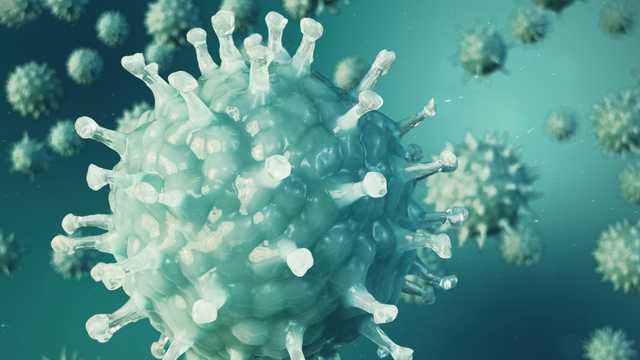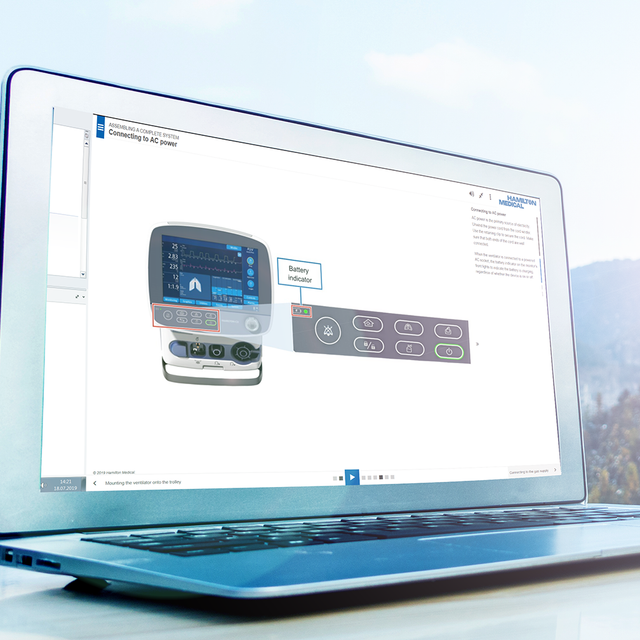

The severity and duration of the coronavirus pandemic have placed extraordinary demands on healthcare professionals. We thank you for your unwavering commitment and acts of heroism in caring for patients during this prolonged crisis. To support you in providing that care, we have put together a collection of relevant resources. Below you can find answers to many frequently asked questions, a range of documents, and links to other useful pages.
Hamilton Medical does not recommend the use of one mechanical ventilator for more than one patient. To ensure appropriate and lung-protective ventilation, monitoring and ventilator settings need to apply for one patient only. This is made possible by the proximal flow- and pressure-measurement technology in our devices. If you use our ventilators on more than a 1:1 patient to ventilator ratio, be aware that:
This will most probably result in distending (and damaging) the healthier lungs of the ventilated patients, while the lower compliant lungs will collapse further.
The increase in artificial airways (breathing tubes) will reduce the ventilator's performance (pressures will be lost due to circuit/breathing tube compliance)
There is no other recommendation than to put the proximal flow sensor at the Y-piece of the ventilated patient (which patient will you choose?).
Recommendations for COVID-19 and ARDS include tidal-volume monitoring and limitations, and individual PEEP settings: How can you make sure this works for two patients on one ventilator?
Weaning the patient from the ventilator is one of the most important way to ensure the availability of ventilators. How can you be sure you can wean your patient with the likelihood of total asynchrony between patient and ventilator?
Running two patients on one ventilator will also involve serious hygiene problems. Patients may also have additional pathogens like multi-resistant bacteria or other viruses, etc.
Important procedures like prone positioning will not be possible in such a setting.
Click here to read the joint statement from the Anesthesia Patient Safety Foundation (ASPF), Society of Critical Care Medicine (SCCM), American Association for Respiratory Care (AARC), American Society of Anesthesiologists (ASA), American Association of Critical‐Care Nurses (AACN), and American College of Chest Physicians (CHEST), who have joined together to address the issue of placing multiple patients who have respiratory failure on a single ventilator.
Informing the local authorities and asking for help
Informing the clinical directorate: all non-essential treatments (surgery, endoscopy, examinations…) should be postponed to free up all ventilators within the hospital
Informing the operating-room department: ask for anesthesia devices, transport ventilators, old ventilators in the basements and whatever works within its intended use
Asking hospitals in the region for help (ventilators): the local authorities may help
Asking private operation centers for their anesthesia devices: once again, the local authorities may have to help
Trying to use NIV devices (not on COVID-19 patients) wherever possible instead of invasive ventilators, and getting patients weaned and extubated as soon as possible
Trying to reduce the number of COPD patients who have their own sleep apnoea devices, but are connected to an ICU ventilator in hospital. Try to bring these patients back to a state where they can be ventilated on their own equipment
According to current knowledge, the SARS-CoV-2 virus is transferred by droplets and aerosols containing the virus. As droplets and aerosols are filtered by the hydrophobic bacterial filter in the IntelliCuff pressure line (PN282016), the risk of contamination is essentially close to zero. This is not the case if you use a syringe or manual cuff controller, although the risk remains quite low even when using these tools.
However, the clinical relevance of this issue during the pandemic should be questioned, because ventilators providing support to COVID-19 patients will only be used on those patients and NOT on non-COVID-19 patients. If there is any concern that the inside of the cuff pressure controller might be contaminated, the IntelliCuff or the ventilator can be decontaminated by putting it into quarantine in a dry room for 72 hours.
The exterior of the ventilator can be disinfected according to the cleaning and disinfection protocol as described in the respective device’s operator’s manual.
The following disinfectants are effective against SARS-CoV-2 (synonym: new corona virus) and can be used on all Hamilton Medical ventilators’ housings and touch screens.
Bacillol AF / Bacillol AF Tissues
Microbac Tissues
Incidin Pro
It is important to follow the instructions for use provided by the respective manufacturer of each product. The operator’s manual for each ventilator model may list additional products (e.g., Ethanol 70%) to be used specifically for disinfection of that particular ventilator.
The internal airway of the turbine-driven ventilators (HAMILTON-C1/C2/C3/C6/T1/MR1) is protected by a HEPA filter, which guards against contamination of the internal gas path from the environment. The HEPA filter does not specifically require changing after the ventilator has been used on a COVID-19 patient. It is sufficient to change the HEPA filter according to the service plan. Hamilton Medical ventilators which are connected to the hospital’s compressed-air supply (HAMILTON-G5/-S1, GALILEO, RAPHAEL) run no risk of being contaminated as the hospital’s air supply is filtered.
On the patient side, you need to install a filter on the inspiration port. This protects the interior gas path against SARS-CoV-2 contamination on the patient side. Please see our filter overview for more information.
Survivability of SARS-CoV-2: Results from the latest research show that the corona virus remains viable for 72 h on plastic and steel surfaces. In the case of suspected contamination of the interior gas path of a ventilator, quarantining the ventilator for an appropriate duration may be a means of solving the issue.
Contamination of the flow sensor tube connectors is avoided due to permanent rinse flow through the flow sensor tubing towards the patient.
Disinfect the surface of the ventilator with a virucidal disinfectant, which is at the very least effective against enveloped viruses. If you have to disassemble/change the interior gas path, always use gloves and a protective face mask (class FFP 2, N95). If there is time, the ventilator should preferably be kept in quarantine for 3 days in a warm and dry place.
If the ventilator is equipped according to the instructions as described in the respective operator’s manual, there is no specific action to be performed on the ventilator. Carry out the regular cleaning and disinfection of the device as described in the hospital’s hygiene protocol. In this case, ensure that the disinfectant is at the very least effective against enveloped viruses.
As SARS-CoV-2 is highly infectious, the patient should be treated in quarantine conditions and hospital staff should take extreme care with personal hygiene. Use of single-use consumables is highly recommended to avoid any cross-contamination within the hospital.
All products mentioned below are tested for a use of up to 28 days and thus can be used for a single patient. A frequent routinely performed change of flow sensor, expiratory valve and breathing circuit set is generally not recommended (
The regional supply situation should be considered when deciding on how often to change the sets for COVID-19 patients.
Expiratory valves (161186, 161189, 160176, 950158)

The current situation sometimes does not allow regular procedures for product training of new staff or for new devices. To make it easier for everyone to use our products on short notice, we have collected the basic training materials here:

For current experience and recommendations on how to treat COVID-19 patients, please refer to the following international guidelines. These organizations update their information regularly.


Julia Bail
Corporate Communications